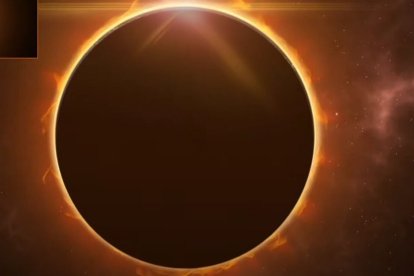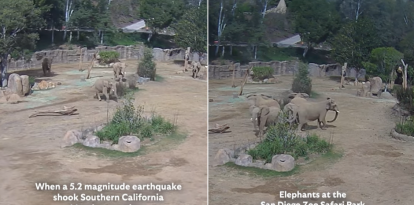Solar eclipse: A danger to the eyes
One of the greatest celestial phenomena of recent decades can lead to serious eye problems.

Un eclipse de anillo de fuego recorre a Estados Unidos (Captura de pantalla YouTube la NASA)
(AFP) Experts warn that a simple glimpse of a solar eclipse, like the one that will occur on Monday in much of North America, can cause irreparable vision loss and serious eye problems.
Tens of millions of people from Mexico to the United States and Canada will witness a rare celestial phenomenon: the Moon will cover the Sun, in some places completely. The next total solar eclipse to occur in this part the world will take place in 2044.
Humans do not usually look directly at the Sun because it is painful on the eyes. However, during eclipses, some "override" this, Aaron Zimmerman, professor of optometry at Ohio State University, explained to AFP.
The main danger associated with this phenomenon, according to the expert, comes from the "photochemical toxicity," when short and powerful waves of blue, violet and ultraviolet light, which is invisible, trigger chemical reactions that damage the rods and cones of the retina, the membrane located at the back of the eye that receives light impressions and transmits them to the eye’s optic nerve.
People end up in the emergency room with blurred vision, changes in color perception and black spots, sometimes with no certainty that their eyes will return to normal.
An important medical journal reported the case of a young woman who went to an eye clinic in New York after watching the 2017 eclipse. She looked at the sun "several times for about six seconds without protective glasses" before putting them on.
A few hours later, her vision became blurry and distorted, colors began to change, and she reported seeing a black spot in the center of her left eye.
The damage observed at the cellular level persisted for six weeks.
"Black spot"
According to the magazine, young adults may be more at risk because they have larger pupils, a lighter eye structure or a "poorer perception of the dangers" of viewing a major eclipse.
"In some cases, the damage is partial and can be treated so that it is no longer noticeable," Neil Bressler, professor of ophthalmology at Johns Hopkins University and editor-in-chief of the journal JAMA Ophthalmology, told AFP.
Although recovery usually lasts a few months, some may not be so lucky.
"In other cases, it can leave a permanent black spot and we don't have a treatment to reverse it. It's like brain tissue: once you've lost it, it doesn't come back," Bressler added.
The best way to observe an eclipse is to use special glasses, which block 99.99% of the light.
If you want to check the quality of these glasses, you should "find the brightest light bulb in your house and look at it closely. You should barely be able to see the light," Professor Zimmerman advised.
If it is too late to get special lenses, there are indirect methods, such as making a small hole in a sheet of cardboard and letting the light hit another surface, or even using a simple strainer from your kitchen in the same way. Another option is to follow the eclipse on NASA’s website.
Those lucky enough to be in the path of the total eclipse will be able to see it when it is fully formed without glasses and admire the Sun's outer atmosphere, its corona, shining behind the silhouette of the Moon.
According to Professor Bressler, the danger also lies in knowing how to protect yourself before and after this particular moment, which can last from just a few seconds to several minutes, depending on each person’s geographical position.
"It is absolutely necessary to know when the eclipse begins and put on your glasses beforehand," he emphasized. Likewise, if you can see the total eclipse phase without them, you have to know when to put the glasses back on, "even if you are captivated by the show," he said.
RECOMMENDATION





















